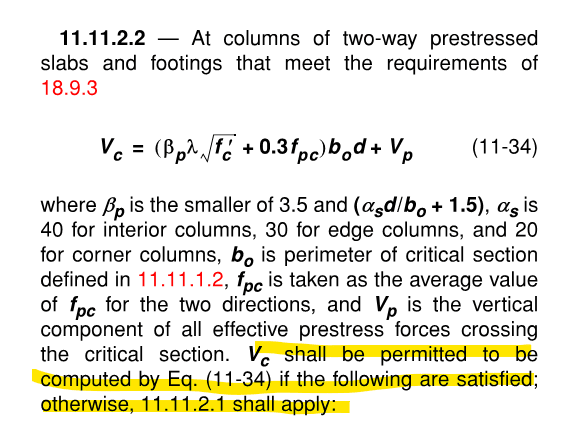When designing for punching shear using stud rails at an interior column in a PT flat plate slab (ACI318-11), the stud rail section limits the maximum shear stress to 8sqrt(f'c). However, the shear provisions for pre-stressed members limit the maximum shear stress to 70 psi based on available testing data. My question is if you are designing a post-tensioned slab with shear reinforcement do you limit your maximum shear stress to 70 psi, or allow it to go to 8sqrt(f'c) as long as you are providing the code-required stud rails? This would apply where you are using high-strenth concrete (over 5 ksi) in the slab.
The other way to look at is that the section for prestressed concrete indicates that if you do not meet the required provisions (or presumably limitations) you use the non-prestressed provisions which do not place an upper-bound limit on shear stress (except for the limitation earlier in the shear chapter of sqrt(f'c)<100 psi).
I would tend to look at the "reinforcement" section of the chapter as a stand-alone design procedure for the purposes of determining maximum stresses.


The other way to look at is that the section for prestressed concrete indicates that if you do not meet the required provisions (or presumably limitations) you use the non-prestressed provisions which do not place an upper-bound limit on shear stress (except for the limitation earlier in the shear chapter of sqrt(f'c)<100 psi).
I would tend to look at the "reinforcement" section of the chapter as a stand-alone design procedure for the purposes of determining maximum stresses.


